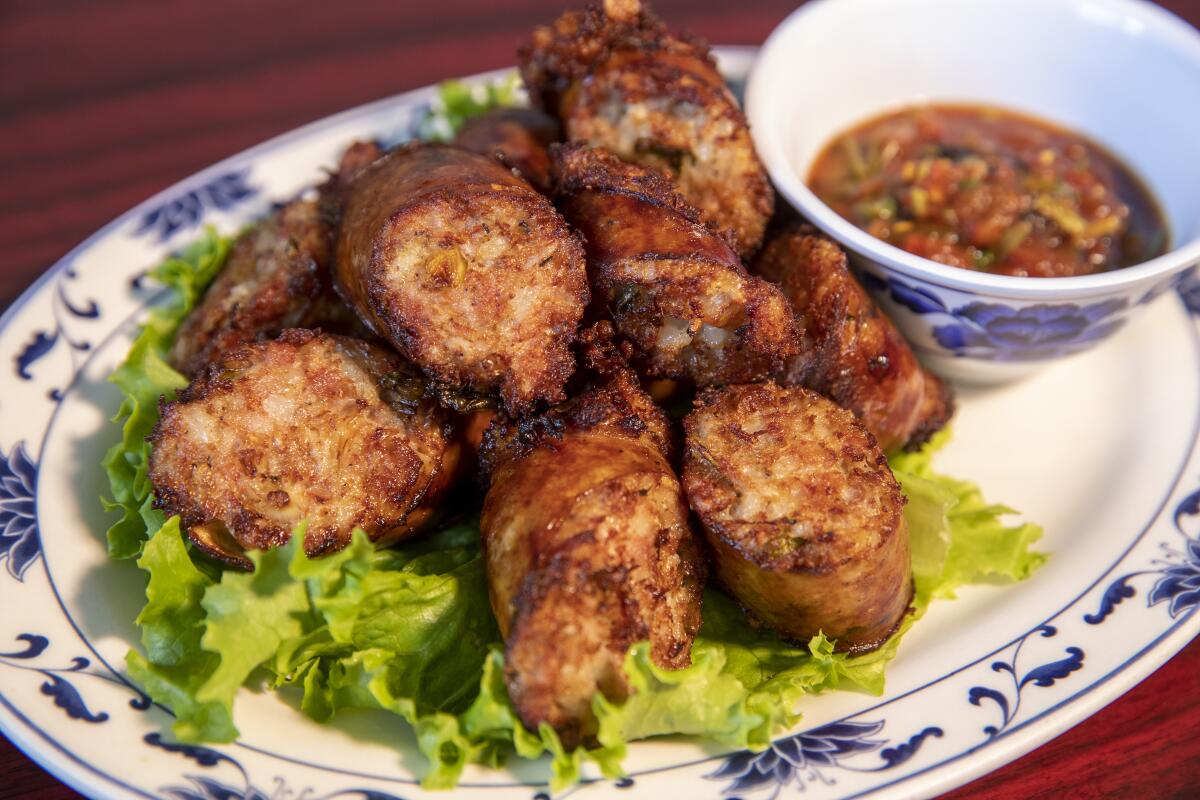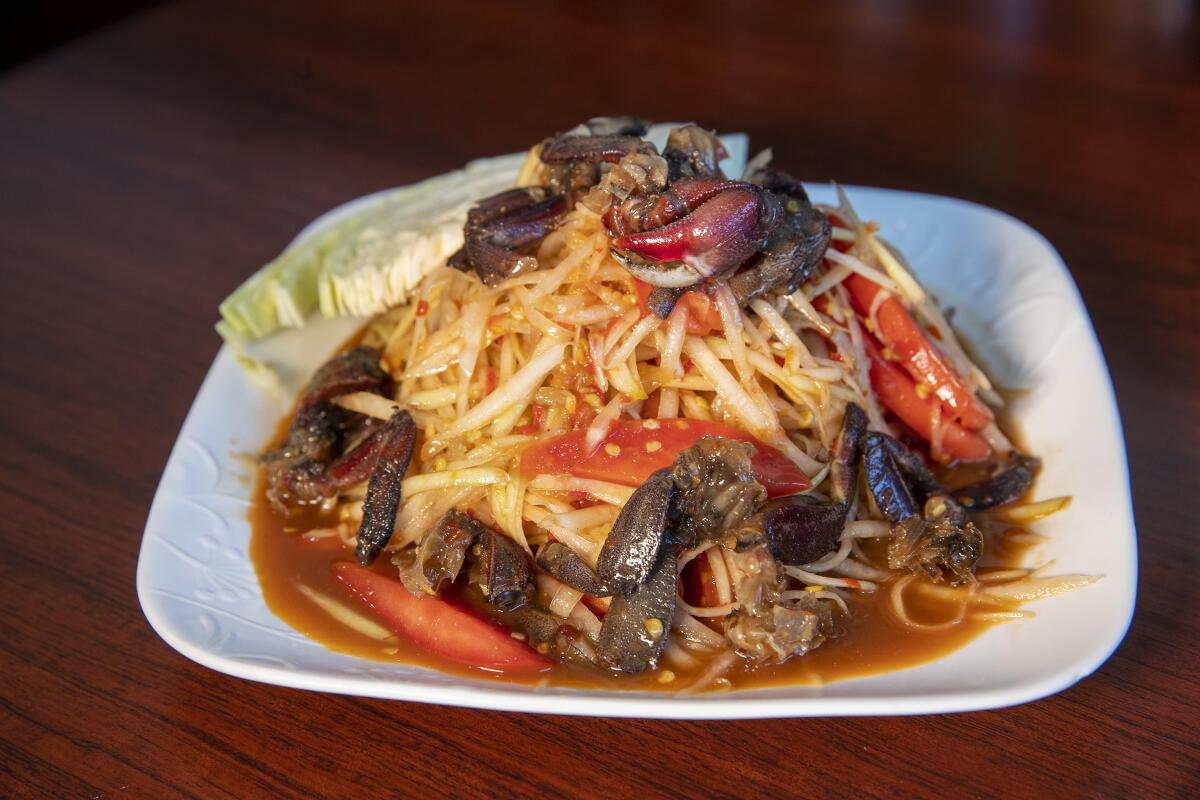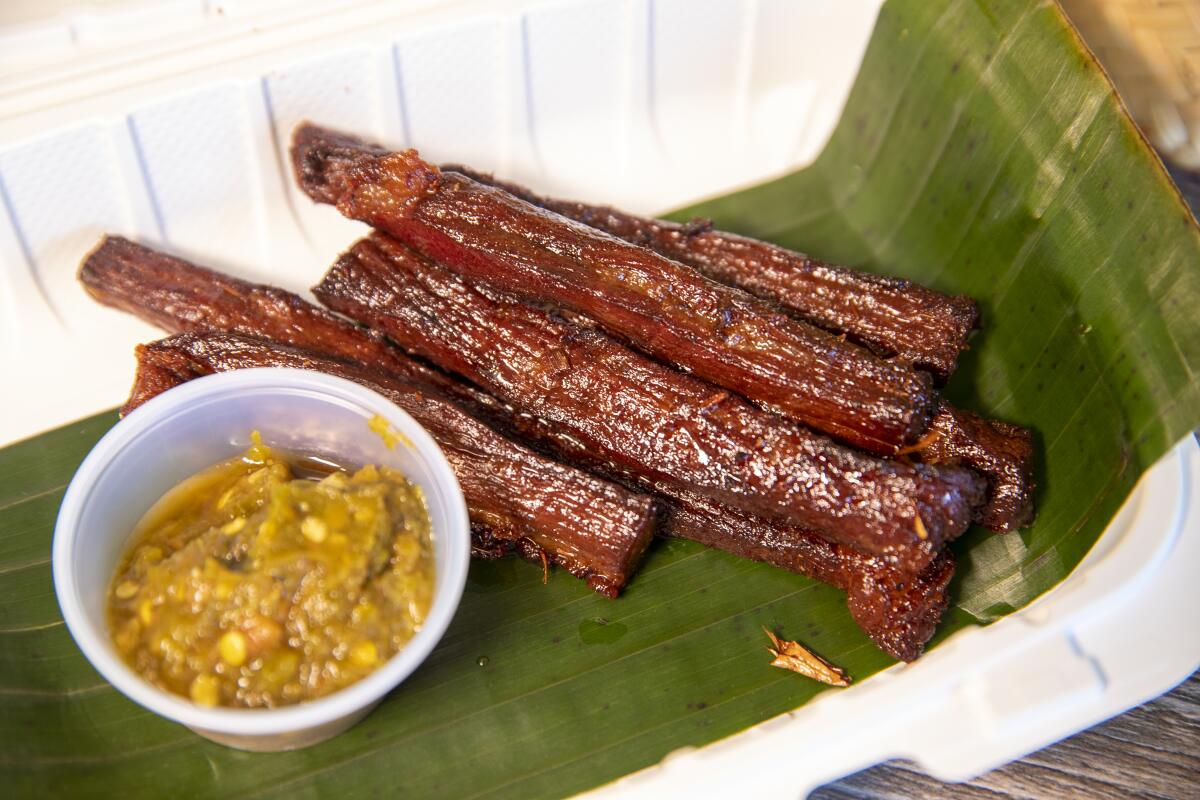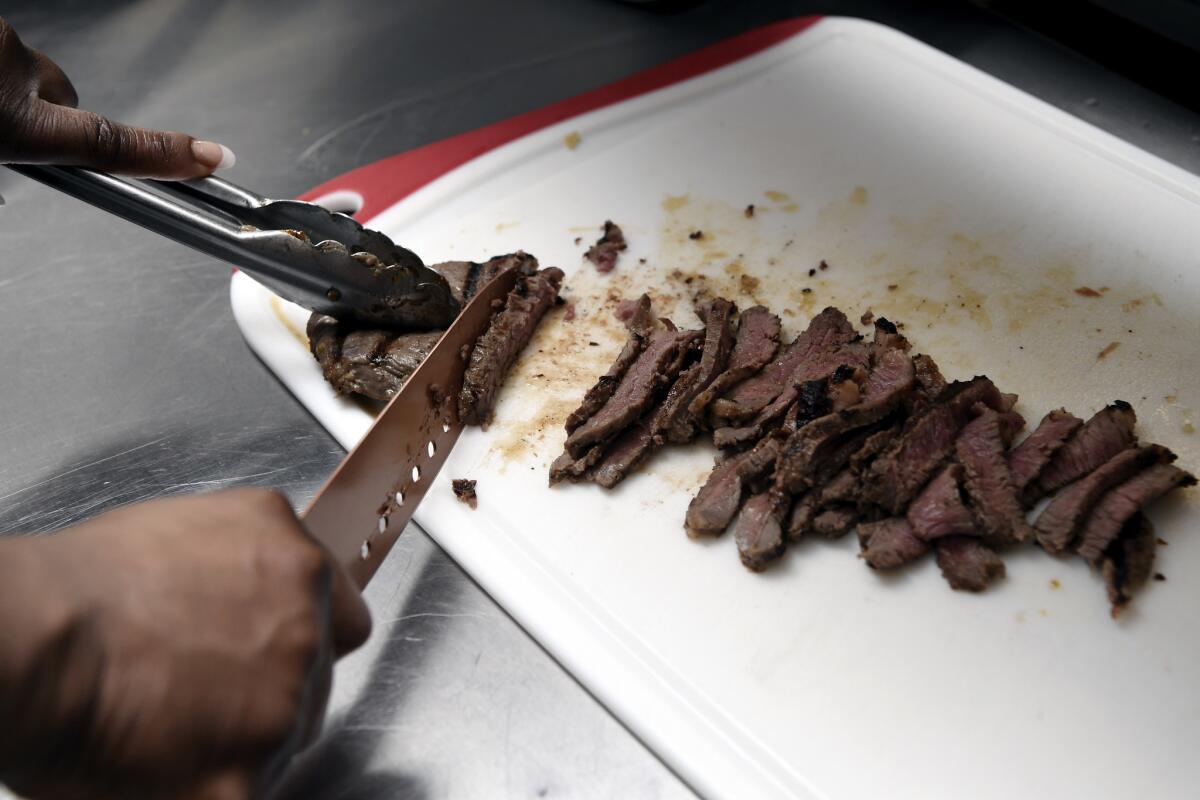Laotian food is fresh, funky and highly underrated. Get your fix at these four places

Fresh herbs, hearty soups and powerful, funky fish flavors are just a few of the hallmarks of Laotian food, a cuisine that isn’t widely represented in the United States but is showcased at a number of excellent restaurants in the Los Angeles area.
Papaya salad, beef jerky, sticky rice and laap, or larb, are examples of typical Laotian dishes — there’s a commonality with Northern Thai food that frequently causes the two cuisines to be lumped together. Lao food, though, has unique characteristics that give it a flavor all its own.
The Lao community in California is the largest in the country, hovering around 60,000, according to the last census. Many are refugees who arrived after the Laotian civil war, a conflict that left tens of thousands dead but has been largely overshadowed in the history books by the Vietnam War. Today, Lao food traditions are maintained in a small but mighty group of restaurants, particularly around the Greater Los Angeles area, Fresno and San Diego.
A trip to the former royal capital of Laos and an exploration of the history of the cooking there, preserved through one unlikely cookbook and the efforts of chefs today.
Saeng Douangdara, a private chef and member of the Laos Angeles community organization, described how to spot the Lao joint in your neighborhood: “If you go to a restaurant and it’s, ‘Something Something Lao Thai restaurant,’ most of the time it’s owned by a Lao person.” He characterized the cuisine as “very resourceful,” citing the country’s geography (landlocked and surrounded by five other countries). “There’s no filtering,” he said. “It’s very aggressive, in-your-face with flavors.”
Today the conversation, he says, has moved from merely trying to teach people the distinction between Lao and Thai food to giving Lao food its long-deserved due. “Things are shifting as far as feeling empowered as a Lao person, and that also shifts the food forward.”

Vientiane Lao Thai Restaurant
Vientiane Lao Thai Restaurant in Garden Grove serves excellent versions of Lao favorites like beef larb, khua mee lao and deep-fried Lao sausage served with a piquant dipping sauce. The beef larb, which comes with beef, tripe, roughly chopped mint leaves and padaek, a potent unfiltered fish sauce, can also (like many dishes) be served “Lao-style,” which includes beef bile. The bile, which is essentially digestive fluid, can take some getting used to but adds a certain earthiness, shall we say, and depth of flavor to the spicy dish.
Manoy Keungmanibong runs the restaurant with her sister — they took it over from their father, who opened it about 11 years ago as a way to keep the family together following the death of their brother. Like many Lao refugees, Keunmanibong and her parents escaped Laos via Thailand before coming to the United States.
Laotian fish curry, spiced with fresh and dried chiles and curry powder, is a simple, elegant dish that gets its richness from coconut milk.
She and her sister learned to cook from their mother. “We always learned from my mom,” she said. “And we never really went out to eat anywhere. After she passed away we started venturing out like, ‘Oh my God, there’s other stuff we could be eating besides Laotian food!’”
But ultimately, there may be no need for that other stuff — Keungmanibong loves the spicy, sour balanced flavors of Lao dishes. “It’s just perfect,” she said.
10262 Westminster Ave., Garden Grove, (714) 530-7523, vientianelaothai.com

Royal King Elephant
Like many restaurants that classify themselves under the Lao/Thai umbrella, Royal King Elephant, also located in Garden Grove, features a number of dishes that can be made Lao-style. Diners can get the papaya salad, a dish more commonly associated in the States with Northern Thailand, prepared with salty crab, which gives the dish an added fishy dankness.
In addition to the other Lao favorites — sticky rice, beef jerky and deep-fried sausage — Royal King Elephant has a number of traditional Lao soups. The khao piak sen, a warming, hearty soup that tastes of lemongrass and lime leaf, includes a generous portion of chewy rice noodles.
9924 Garden Grove Blvd., Garden Grove, (714) 638-1887, royalkingelephant.com
Banana Leaf Kitchen
Banana Leaf Kitchen is the newcomer of the group, open since June in a small storefront in Huntington Beach. Co-owners Denise Trinh and Boualith Thatsanaphonh were family friends growing up in Orange County and decided to open the business based on a mutual appreciation of Lao cuisine (Thatsanaphonh is Lao; Trinh is Vietnamese). Trinh spoke of her love of the herb-heavy cuisine: “It’s always fresh; that’s why it takes a little longer.” Relative to Thai cuisine, Trinh described Lao food as “a little spicier, a little saltier.”
The menu at Banana Leaf Kitchen is small, but standouts include the Lao sausage, made with fat-heavy pork, galangal and lemongrass. The long, slightly sweet strips of deep-fried beef jerky are good too, as is the papaya salad, served with bits of crunchy pork rind.
19092 Beach Blvd., Suite V, Huntington Beach, (714) 377-6614, bananaleaf.kitchen

Kra Z Kai’s Laotian Barbecue
Kra Z Kai’s, located in Corona about 45 miles east of downtown L.A., isn’t the most convenient place to get to for most Angelenos. But is it worth the trek? For many, including our own critic Patricia Escárcega, the answer is: absolutely.
In her review, Escárcega extolled the beef short ribs, bathed in a sweet, garlicky oyster sauce marinade, as well as the chicken wings, which are given a similar oyster-y bath before hitting the grill. More traditional Lao favorites like beef jerky and papaya salad are available and are also recommended.
1218 Magnolia Ave., Suite G110, Corona, (951) 268-6968, krazkais.com
More to Read
Eat your way across L.A.
Get our weekly Tasting Notes newsletter for reviews, news and more.
You may occasionally receive promotional content from the Los Angeles Times.











